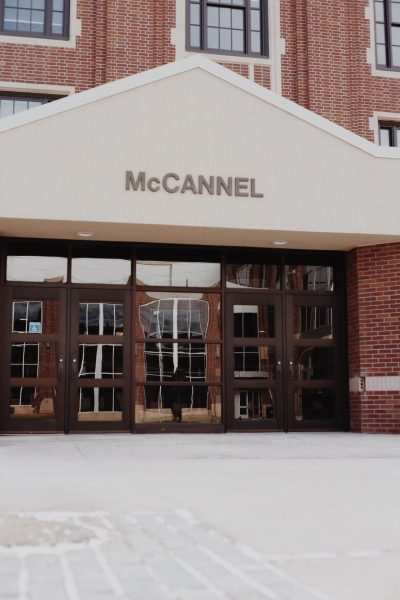Comparing rock walls: The problems with higher education
Last week, President Robert Kelley gave his annual state of the university address, discussing the university’s plans for growth over the course of the next five years. Part of this plan included adding an additional thousand students to UND.
While most of the goals that Kelley outlined in his speech are admirable, I couldn’t help but be skeptical of the idea of increasing the UND student population.
Like most things in American education, it boils down to one thing: Money. With more students, UND could get more money and in turn build a nicer campus with more amenities so that they can get more students. The process repeats from there.
This is far from exclusive to UND. In fact it is happening all over the country. Universities are seeking to add more and more students.
This has created a culture at universities to sell themselves based on their amenities rather than on the programs that they have. While I was touring at both UND and NDSU, all I remember hearing about was how one school’s rock wall was bigger than the other. A very similar thing occurred while I was touring the University of Minnesota, I was lead on a tour of the most picturesque buildings on the campus.
The point of what higher education is supposed to be has been completely lost, as it becomes less about educating students with well developed programs and has become more about who has the biggest rock wall.
This is toxic for students who are already attending the university, as the focus moves towards building an environment that attracts new students to attend the university while also encouraging affluent alumni to donate back to the university.
Both of these can easily be seen on campus with the Nickname Committee, which has cost a quarter million dollars finding a way to chose a new nickname. Most of the effort has been focused on how to get alumni involved in the decision, as well as choosing a new name that will help to recruit new students. There was a time when the vote may have just been among the student body. However, that idea seems to have been long since abandoned.
Some may argue that this is the only way that higher education can function, but there are better ways already in place.
In Finland, all higher education is free. Not only that, but to teach on any level of the education system, you are required a Master’s degree. Not only that, but teachers are paid exceptionally well. This creates a culture that values the teacher as the most important part of education, and thus values the quality of teaching in the education process above all else.
This is why Finland, in 2008, ranked first in the UN’s Human Development Index that measures the quality of education in a country.
Higher education in the U.S. has served to marginalize professions that don’t pay, as college educations become more and more about how much you can make after you graduate rather than what you learn while you’re there.
Faculty are paid poorly at almost all state universities and are paid based largely upon tenure. This drives away many talented individuals from coming to the profession.
There needs to be a cultural change in higher education to focus on the education of students and to create a culture that values the ability of its professors and its programs. If schools compete on the basis of their academics, maybe someday campus tours will compare programs and professors, rather than the size of their rock walls.
Alex Bertsch is the opinion editor of The Dakota Student. He can be reached at [email protected].











